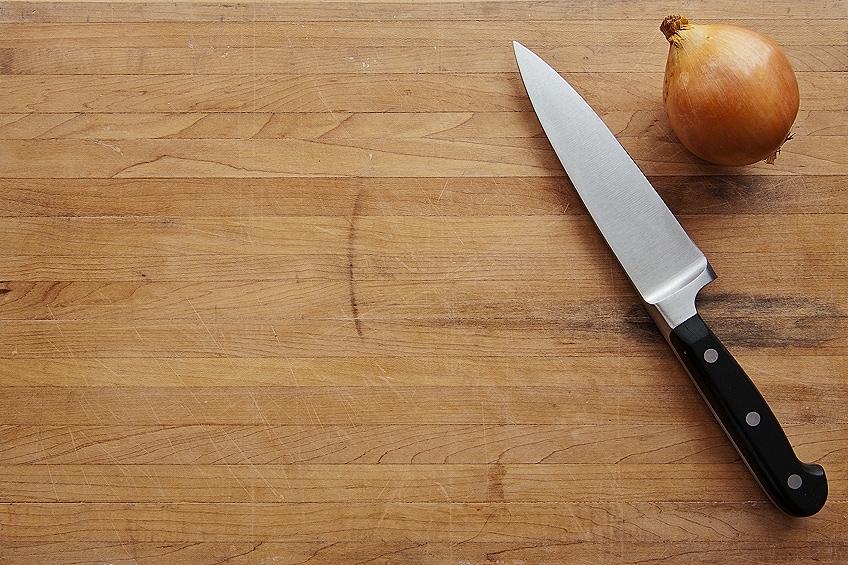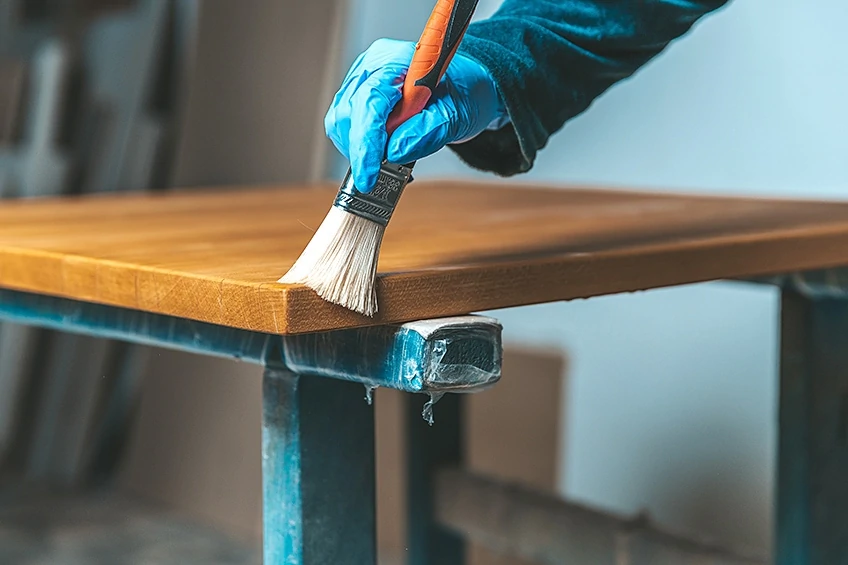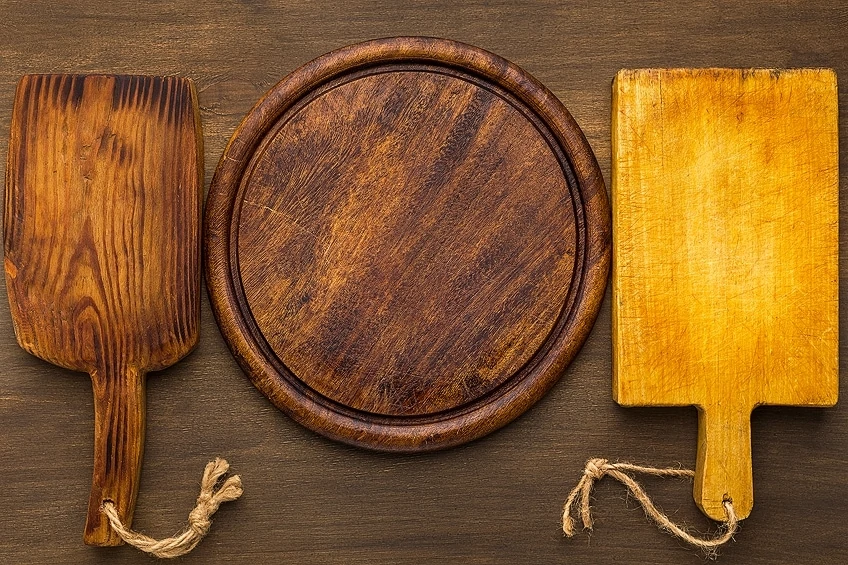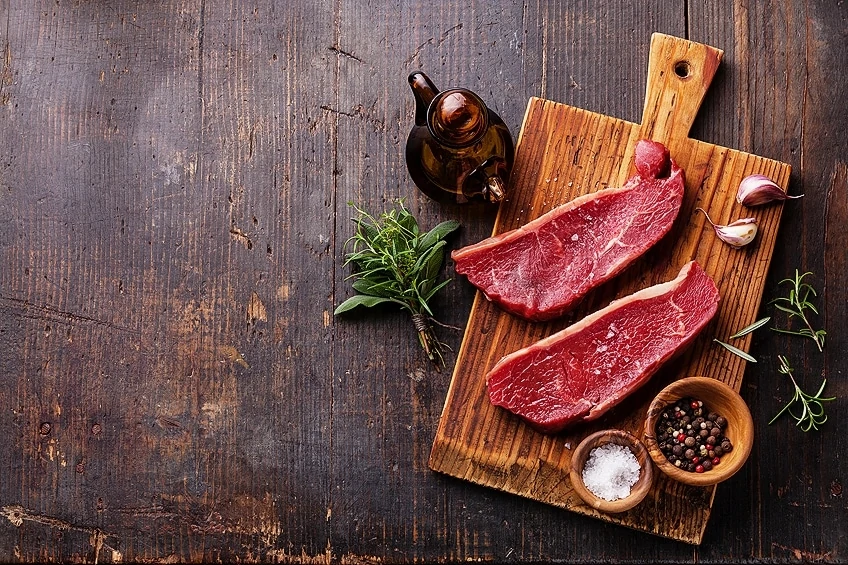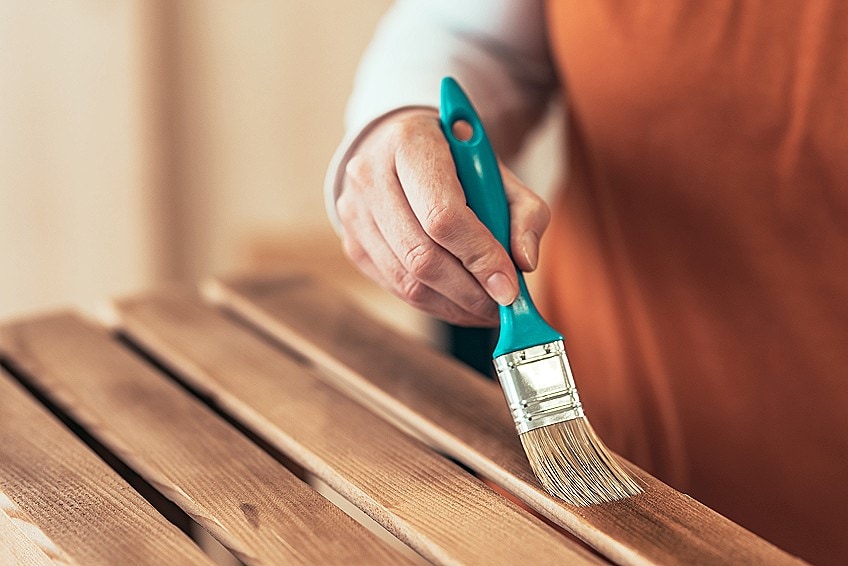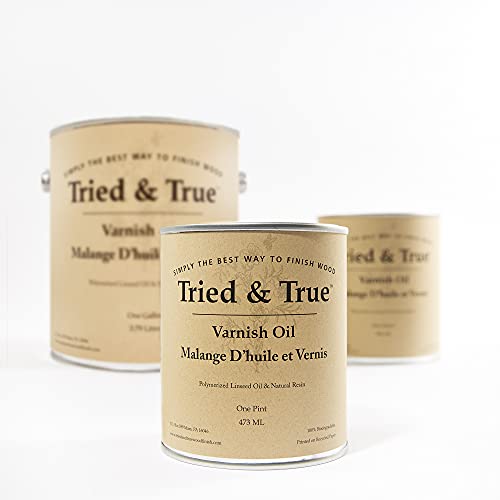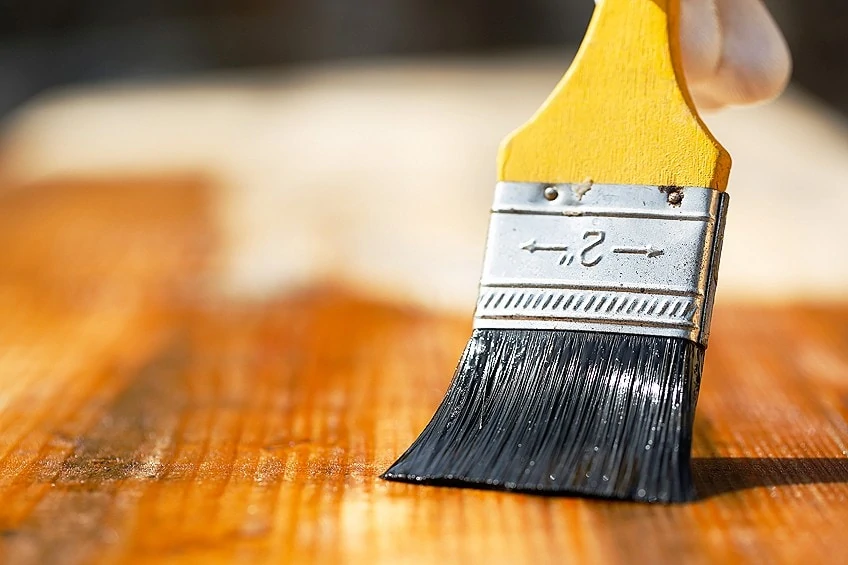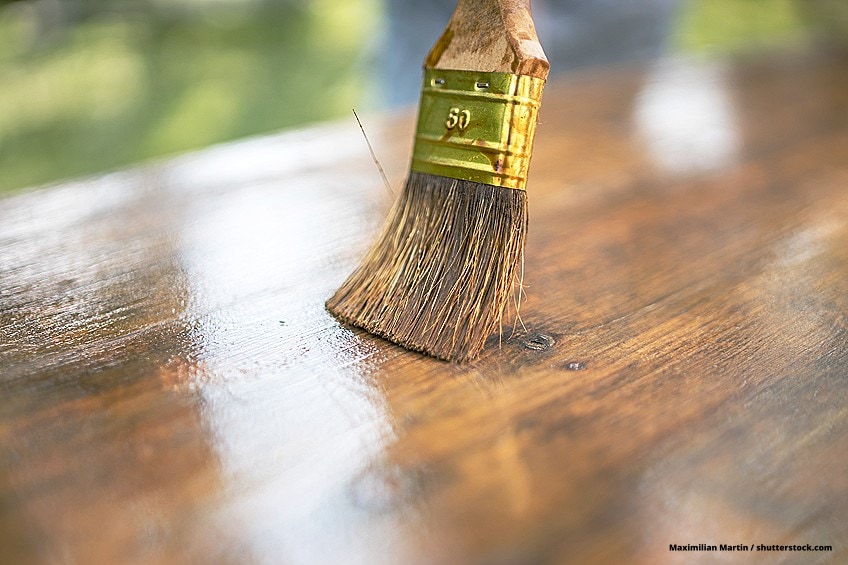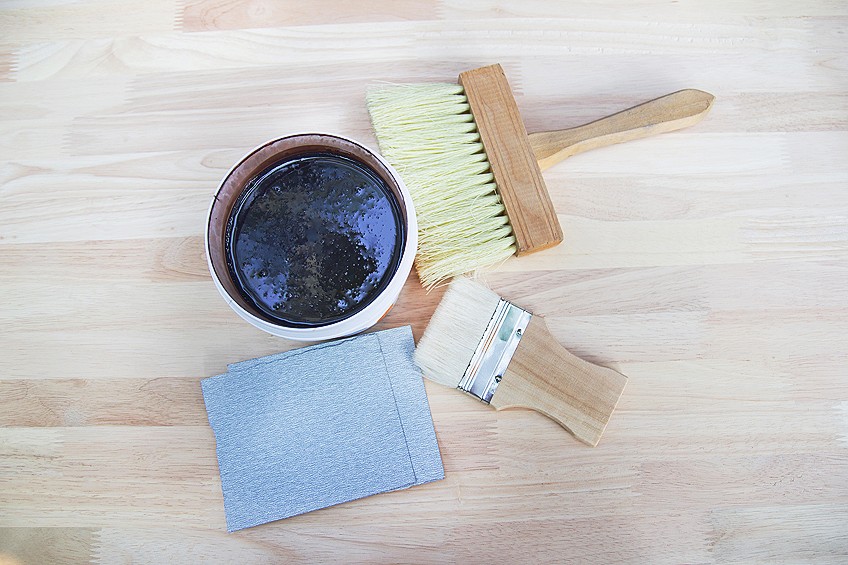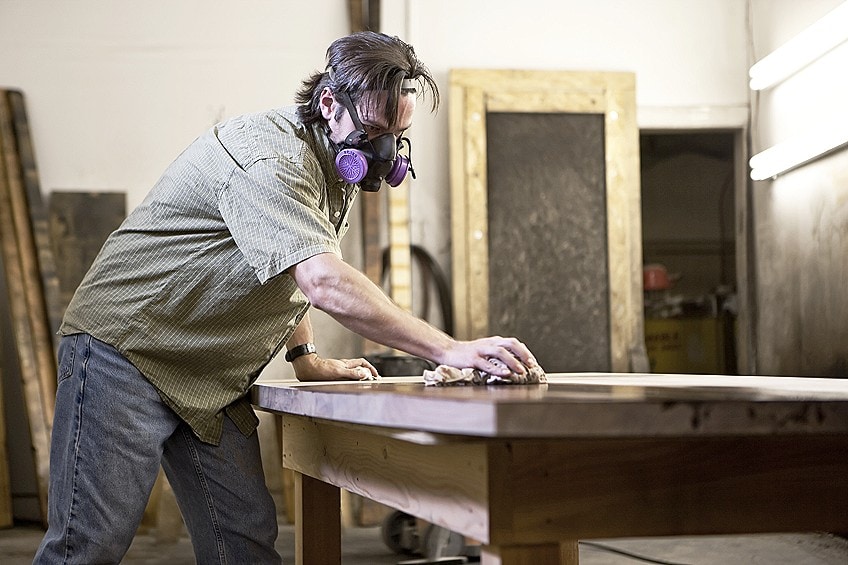Food Safe Wood Finish – Complete Tutorial on Food Grade Wood Sealers
This post may contain affiliate links. We may earn a small commission from purchases made through them, at no additional cost to you. You help to support resin-expert.com
The world is filled with toxins that seem to come into contact with almost everything around us. Tying in with this thought, the finishes used on wooden products – specifically in the kitchen – need to have a food safe wood finish to ensure that we are not ingesting harsh chemicals. Any wood product that touches our food or comes into contact with our mouths needs to be finished using a food safe wood sealer and a food grade clear coat.
Table of Contents
Are All Wood Finish Products Food Safe?
It is worth mentioning that not all wood finish products are made the same and the name does not always guarantee the purity of the product. A lot of the commercially produced products on the market are mixes of thinners, solvents, metal compounds, and dryers to name but a few. Always take the time to read the label properly to ensure that what you are buying is a truly food safe wood finish, and when it comes to the application of the product, follow the instructions, and properly dispose of the rags afterward.
While this may sound overwhelming and terrifying, we will take a look at some of the things that need to be considered when it comes to determining if your wooden products need to have a food safe wood finish.
Wood Projects Needing a Food Grade Wood Finish
When it comes to any project involving wood, knowing how to properly finish it will not only preserve it for years to come but will also help to finish off the look. While raw wood can look nice, but realistically it will not last long and can become a hazard in the home. Some DIY projects that will need to be food safe include:
- Cutting boards
- Butcher’s blocks
- Cutlery
- Bowls
- Plates
- Tables
- Chairs
- Benches
- Shelves
- Toys
Types of Food Safe Wood Finishes
With so many wood projects just waiting to get started, you may be wondering what type of food grade varnish and food safe clear coat is the best option. We will take a look at some of the more common food safe wood finishes available.
Shellac
To seal wooden surfaces and protect them from moisture, you will want to look for shellac products. It is completely natural, comes from the Lac bug, and is often used to coat sweets and candy. It forms a film on the wood’s surface and can create a glossy finish.
Recommended Product: RUST-OLEUM Zinsser Bulls Eye Clear Shellac
Zinsser’s clear shellac wood finish is ideal for preserving and sealing your wooden projects. It is quick and easy to use – drying in less than 45 minutes. It is also non-toxic and all-natural, making it safe to use on food-related products.
- A clear traditional finish and sealer
- All-natural, non-toxic, easy to use formula
- Classic finish for wood trim, paneling, and furniture
Pure Tung Oil
This is a popular drying oil that has been used for centuries in China. The oil is found in the seeds of the tung tree and has even been used to waterproof boats as well as harden wooden projects. The oil’s natural properties make tung oil food safe. It is a versatile oil that is easy to use and is environmentally friendly. It penetrates the wood more deeply than other food grade wood sealers and is and protects the wood from water, oil, alcohol, and daily wear and tear. It is more durable than shellac products and provides lasting protection, however, it takes a lot longer to dry.
Recommended Product: HOPE’S 100% Pure Tung Oil
Hope’s tung oil is perfect for creating surfaces that come into contact with food. As with any tung oil food safe product, patience is necessary when it comes to applying the food safe wood finish. You will need to apply the oil thinly and give it a day to dry in between coats but it is worth it when you see the end product.
- Naturally drying oil for hand-rubbed, waterproof finish for wood
- Enhances natural color and produces an instant low gloss
- Penetrates deep into wood fibers and cures to a non-oily solid
Food Grade Beeswax
As the name implies, this food grade wood sealer is a product derived from the product of honeybees. The honeycomb is refined and usually used to glaze fruits, create chewing gum, and produce gel capsules. It is non-toxic and proven to be safe to use on most food surfaces. While this product can be used on most surfaces, the food grade clear coat needs to be kept in a cool area as the wax can melt in the heat – which is problematic if you are not careful.
Recommended Product: CUTTINGBOARD Natural Wood Wax and Conditioner
CuttingBoardCom produces food safe wood sealers that are ideal for protecting and restoring chopping boards, salad bowls, butcher blocks, and countertops. It makes cleaning easier, prevents stains, and covers knife marks.
- A premium cutting board wax and conditioner
- Made using genuine beeswax, carnauba wax, and mineral oil
- Restores and protects wood cutting boards
Carnauba Wax
Also known as palm wax or Brazil wax, this plant-based food safe clear coat is non-toxic and can be added to beeswax to make the wood water-resistant. It is known for its shiny appearance and beautiful finish.
Recommended Product: BEALL TOOLS Carnauba Wax
Beall Tool’s carnauba wax is the ideal option for bigger DIY projects as it requires a buffing machine for the application, but it provides a beautiful, shiny finish. Smaller projects do not work with this method as buffing machines can become cumbersome and make more mess than anything else.
- A solid carnauba wax bar
- Provides a beautiful shiny finish for various surfaces
- Needs to be used with a buffing machine
Food Grade Mineral Oil
Unlike the other options on our list, this food grade clear coat does not dry and needs to be applied regularly to protect the wood from damage. It is often used on countertops, butchers’ blocks, and cutting boards. If you are happy to take on the monthly maintenance, then this is a great nontoxic wood finish.
Recommended Product: ULTRAPRO Food Grade Mineral Oil
UltraPro’s food grade mineral oil is ideal for rehydrating your wood without leaving an oily residue on the surface. It is an odorless oil that should be left overnight before using the wooden product.
- A versatile white mineral oil
- Perfect for use as a food-safe lubricant
- An unscented and NSF approved formula
Walnut Oil
This food grade varnish protects the product from water and alcohol; however, it needs to be properly cured before use – failure to do so will see the wood go rancid as time goes by. While it has been derived from nuts, it should not affect people with allergies however we do advise you to use this product with caution should you have a nut allergy.
Recommended Product: MAHONEY’S FINISHES Ultimate Walnut Oil
Mahoney’s Finishes walnut oil is easy to apply and quick to dry. It also provides a healthy layer of protection on your wooden products while giving them a smooth, satin finish. The bottle has been fitted with a nozzle to help you control the flow and application of the oil.
- A multi-purpose wood protectant for various projects
- Easy to use with increased application control
- Easily absorbed and perfect for all types of wood
Raw Linseed Oil
This oil is derived from flax seeds and requires no refinement. It provides protection from water and sun, making it ideal for wooden objects that will be left outdoors. However, this product can take a few weeks to dry and will need to be properly cared for during that time.
Recommended Product: SUNNYSIDE Pure Raw Linseed Oil
Sunnyside’s pure linseed oil is perfect for use on raw wood as it is able to penetrate deeply and offer lasting protection. It is one of the fastest drying options, taking approximately four days to dry.
- Deep penetrates and protects wood for a quality finish
- A completely natural, slow-drying oil
- Can be added directly to oil-based paints and stains
Paraffin Wax
While the name may be concerning, paraffin wax is made from petroleum and is often used in creating jams and other preservatives, making it safe to eat off. This oil does not dry and will need to be applied monthly to ensure that the wood is properly protected.
Recommended Product: RED HEAD BARRELS Oak Barrel Sealing Wax
Red Head Barrel’s sealing wax is perfect for sealing off leaks and waterproofing wood, which is why it is such a good option for barrels used to make whisky or other alcoholic beverages. This wax does not affect the flavor of the liquid inside the barrel and is nontoxic.
- Unscented and unflavored barrel wax for sealing leaks
- Perfect consistency for oak barrels
- Easy to use and quickly seal wood
Coconut Oil
The final food grade wood sealer on our list is perfect for butcher’s blocks and cutting boards, provided that you use the correct version of the oil. It needs to be fractionated or distilled to prevent it from going off.
Recommended Product: CLARK’S CHOPPING BOARD Coconut Oil and Wax
Clark’s Chopping Board Coconut Oil and Wax is preservative and additive-free while remaining safe for human consumption. It has been labeled as one of the safest worktop oils available and will breathe life into old wooden objects without the risk of going rancid.
- 100% plant-derived coconut oil and wax
- Specially designed for kitchen surfaces and utensils
- Maintains the shine and natural condition of the wood
Polyurethane Wood Finish
This finish is easily described as a liquid plastic and comes in both oil and water-based versions. The water-based version is the most popular as it is non-toxic and has minimal odor. It’s one of the more hardy options, although it is prone to scratches.
Recommended Product: MINWAX Polycrylic
Minwax Polycrylic is one of the more durable options when it comes to polyurethane wood finishes. It can be applied onto an oil-based finish if need be and can even be applied with foam rollers, brushes, or clean rags.
- A crystal clear protective finish
- Ultra-fast drying and easy water cleanup
- Protects and adds beauty to various interior wood finishes
Varnish Wood Finish
This is the term used to refer to most wood finishes. They are durable and are ideal for use on raw wood as well as wood that will be left outdoors. It provides protection from water and UV rays and is often used on boats, beach chairs, and decks.
Recommended Product: TRIED & TRUE Varnish Oil
This semi-gloss topcoat builds durability and sheen with every application. This linseed oil fortified with natural resin varnish offers excellent abrasion and scratch resistance. It is a natural product that looks good, enhances durability, and is safe to use.
- Highly polymerized linseed oil fortified with natural varnish resin
- Creates a semi-gloss topcoat
- Excellent abrasion and scratch resistance
Lacquer Wood Finish
For an intensely glossy finish, you will want to use this Asian-inspired finish. While the finish is durable, it will discolor with time and is prone to scratches. It needs to be applied using a sprayer due to its thing consistency. When applying a lacquer finish, ensure that you are working in a well-ventilated area.
Recommended Product: DEFT Clear Wood Finish Lacquer
DEFT’s clear lacquer is proven to have anti-yellowing properties and dries in under 30 minutes. This semi-gloss lacquer will not leave brush marks and is resistant to alcohol, water, and fruit juice.
- A semi-gloss brushing lacquer
- Easy to apply and non-yellowing formula
- No sanding between coats and fast-drying
Pros and Cons of Wood Finishes
With all of the options available and suggestions above, you may be wondering what the pros and cons of each wood finish are. Let us take a look at the different options and the main pros and cons to help you determine your perfect fit.
Lacquer Finish
Lacquers, or varnishes, are one of the simplest options when it comes to finishing wood projects. Unfortunately, many of these products contain hazardous substances, however, there are food safe lacquers out there.
PROS
- Easy to use
- Quick-drying
- Easy to remove
CONS
- Harmful fumes
- Flammable
- Not food safe
Oil Finish
This includes tung oil, mineral oils, coconut oil, linseed oil, and walnut oil as mentioned above. It will either be a drying or non-drying finish, so make sure you choose the product that best suits the needs of your wood.
PROS
- Provides a satin finish
- Easy to apply
- Easily covers scratches and marks
CONS
- Slow drying
Polyurethane Finish
In most cases, polyurethane food safe options can be difficult to find. However, it is still one of the better options when it comes to finishing indoor wood products as it provides proper coverage and protection from external forces.
PROS
- Durable finish
- Water-resistant
- Available in many varieties and textures
CONS
- Cannot be used outside
- Discolors in the sunlight
- Difficult to repair
Shellac Finish
This is the crowd favorite when it comes to food safe wood finishes. It is completely natural and contains the same substance used in coating sweets and candies – although we would recommend eating this as it hasn’t gone through the same process.
PROS
- Fast drying
- Works as a sealer
- Can remove stains
- Available in many colors
CONS
- Not water resistant
- Cannot be used on outdoor products
Wax Finishes
Using a wax finish is fairly straightforward and leaves a beautiful finish. They are ideal for butcher’s blocks and chopping boards, are easy to use and even easier to remove. Of course, this means that you’ll need to keep an eye on the surface of the wood to determine when to reapply the wax.
PROS
- Glossy finish
- Easy to remove
CONS
- Not durable
- Requires reapplication
Choosing a Food Safe Wood Finish
With so many varieties on the market, it can be difficult to select the option most applicable to your project. The first thing you need to consider is whether you want to seal the surface or have the oil penetrate the wood. Penetrating oils soak into the wood, are easy to apply but offer less protection, while surface sealers or film finishes remain on the surface, offering a protective layer. Surface sealers can be more difficult to apply but the final product makes it all worthwhile.
Surface sealers are recommended for wooden objects that will be regularly used and experience daily wear and tear, while penetrating oils are ideal for objects not needing that much protection, like picture frames or bookshelves.
It is important to remember that not all surface sealers are food safe, however, the options that we have listed in this article have all been found to be nontoxic. Surface sealers include waxes, shellac, varnish, lacquer, and polyurethane.
If you decide to go with penetrating oil, you will need to decide if you are looking for a once-off application or an option requiring regular maintenance. This will be determined by either going with a drying or non-drying wood finish.
Penetrating oils that dry cure to become a solid protective layer, however, it is not as solid or strong as surface sealers. The oil hardens when it comes into contact with oxygen through a process known as polymerization. This means that it begins to cure as soon as it touches the wood.
Non-drying oils or treatments essentially stay wet. This is because the oil does not cure and washes away over time. Anything that comes into contact with the wood will be left with a residue, so be sure to go with an odorless, flavorless option whenever possible. To keep the wood “wet”, the oil will need to be reapplied. Drying oils can include linseed, tung, and walnut oils. Non-drying oils include mineral oil and coconut oil.
The Truth About Food Safe Wood Finishes
In this day and age where everyone is health-conscious, many wood finishes have gotten rid of the toxic ingredients, for example, lead dryers. It is no longer necessary to avoid certain wood finishes, just make sure that you read the product label properly before applying your chosen wood finish.
Many surface sealers have the added benefit of lasting long, drying fast, and providing the best protection – all while being food safe. Surface sealers to avoid include lacquer, linseed oil, varnish, Danish oil, polyurethane, and even paint. There is some debate around polyurethane food safe options.
A topic of debate that often arises is the fact that most wood finishes are food safe once the finish has had time to cure. This is more than simply feeling dry, the odor needs to have gone away as well. Most people recommend waiting 30 days for the finish to cure properly. In fact, there is very little information to support the notion that wood varnishes are toxic when accidentally consumed by a person. The food safe wood sealer still contains solvents or dryers to facilitate a faster drying time.
So, what we are saying is that once the wood finish has cured, the toxicity threat should go away, however, you still need to check the product label beforehand to ensure your own safety as we cannot account for every single wood finish on the market. The products on our list above have been listed as food safe wood finishes, so if you need some peace of mind when finishing your creation, rather opt for one of them and ensure the safety of your family.
Applying a Food Safe Wood Finish
In this section, we will be looking at applying penetrating oils to your completed wood project. The same method works for both the drying and non-drying varieties. Always remember that the rags used for an oil finish need to be properly disposed of.
Applying an Oil Finish
- You will need to use nitrile gloves to protect your hands and a lint-free rag.
- You can pour the oil directly onto the wood or onto the rag first.
- Spread the oil along the wood’s grain.
- Leave the oil for 10 minutes before wiping off any excess oil.
- Once the first layer has dried, you can apply an additional layer.
- Pro tip: For a smoother finish, sand the wood with sandpaper before it dries – wipes it down with your rag to get rid of excess dust. Wait for it to dry before applying more of the wood finish.
This list is a very simple guideline for applying penetrating oils. Always read the product label before use and make sure that you have everything you need to properly finish off your project.
Discarding Oil Finish Rags
We have made mention of the fact that the rags used need to be properly disposed of. This is because the drying version of penetrating oils needs to be exposed to oxygen to cure, which is why the product on the shelf is able to remain liquid. A byproduct of the curing process is heat, although this is not something easily noticeable.
While the wood receives a thin layer of the oil, your rag becomes properly soaked, resulting in the heat building up when thrown away in a dustbin or tossed in a drawer. When left for long enough, the rag may spontaneously combust, bursting into flames. In some cases, you may hear an explosion that will alert you of the danger, however that is not always the case and you risk burning your house down.
A simple way to deal with the soaked rags is to open them up after use and hang them over a bucket. Let it dry for a day or two before finally throwing them into the trash. This will prevent them from spontaneously combusting.
How to Apply a Surface Sealer
The most commonly used surface sealer is shellac, natural food grade varnish, and food safe lacquer finishes. While shellac can be used for most sealing jobs, you cannot use it with food safe polyurethane, non-grain-raising stains, or water.
For a food safe polyurethane finish, read the label beforehand to determine whether or not sanding is needed. This finish also usually requires treatment and an additional sealer to properly care for the wood. Here are tips for applying a food grade sealer:
- Use a clean brush to paint along the grain of the wood.
- Make sure that the surface sealer is applied evenly.
- Ensure that the end grain is properly finished – it may require more sealer than the rest of the wood.
- Let the sealer dry for two hours.
- Gently sand the wood, being careful not to break the seal.
- Wipe off the excess dust and debris.
- If you are working with a freshly sanded piece of wood, you may need to give it an extra coat of sealer.
- Porous woods will also need more than one coat for proper coverage and protection.
Frequently Asked Questions
Do Oil Finishes Dry, Or Do They Have a Greasy Residue?
Oil’s main purpose is to moisturize the wood by penetrating the surface. They are available in drying and non-drying options, however, the residue – if any – is minimal. The only time you will have residue is if you have used too much oil.
What are the Perks of Using an Oil-Based Finish?
They protect and preserve the wood by penetrating deep beneath the surface. It is easy to maintain and repairs are quick to do – and should you accidentally apply too much, you can simply wipe it off.
Can I Use Oil Over a Coat of Varnish?
No, the food grade varnish will create a layer of film on the wood, making it impossible for the oil to penetrate the wood. You will need to remove the varnish if you want to apply an oil finish.
Is an Oil Finish Food Safe?
Yes, most wood oils have been designed for use on food surfaces or wooden products that come into contact with food. Always read the label beforehand to ensure that the product is indeed food safe.
What Can I Do if I Have Applied too Much Oil?
This is a pretty quick fix. Wet a lint-free cloth with thinners or white spirit, wiping away the oil. Use the spirit sparingly to avoid wood damage. This is one of the many benefits of using an oil-based finish.
What are the Perks of Using a Varnish?
They are tough, durable, and easy to clean, making it the perfect option for your wood project. Depending on which option you go for, you can cover the wood in something very similar to a shell.
Is There a Difference Between Varnishes and Lacquers?
The average consumers tend to look for varnishes that are easy and safe to use in the home while lacquers are usually used by tradesmen and contain solvents. However, they are basically the same thing.
What are the Benefits of Using a Wax Product?
Wax finishes offer a unique, almost premium feel to wood products. You can also re-wax it as often as you like to maintain the glossy sheen. This means that if you wash the board, you can easily reapply the wax to maintain the glossy finish.
Can I Put Wax Over a Coat of Varnish?
Yes, as the wax is responsible for a shiny finish, it can be applied on top of almost anything to improve the final look. We recommend that you first test it on a small, hidden area to see if you are happy with the result.
Can I Apply Varnish on Top of a Wax Finish?
No, you cannot apply a different product on top of a wax finish as it will not stick to the wood. Varnishes and oils need to be able to penetrate the wood and the wax layer will prevent it from sticking to the wood the way that it should. The wax needs to be removed before trying to add a new product to the wood.
How Do You Apply Lacquer?
They are really easy to apply, have a low odor, and can be used in small, tight spaces. While the odor should be minimal, we always recommend varnishing wood outside or in a well-ventilated area. Start by applying a thin first coat and wait for it to dry properly before applying a second. It is as easy as that.
If you are making a wooden object for preparing or presenting food, then you will need to make sure that it is finished with a food-safe product. Our comprehensive guide above should have covererd every option available for you to choose from. Have fun woodworking!


